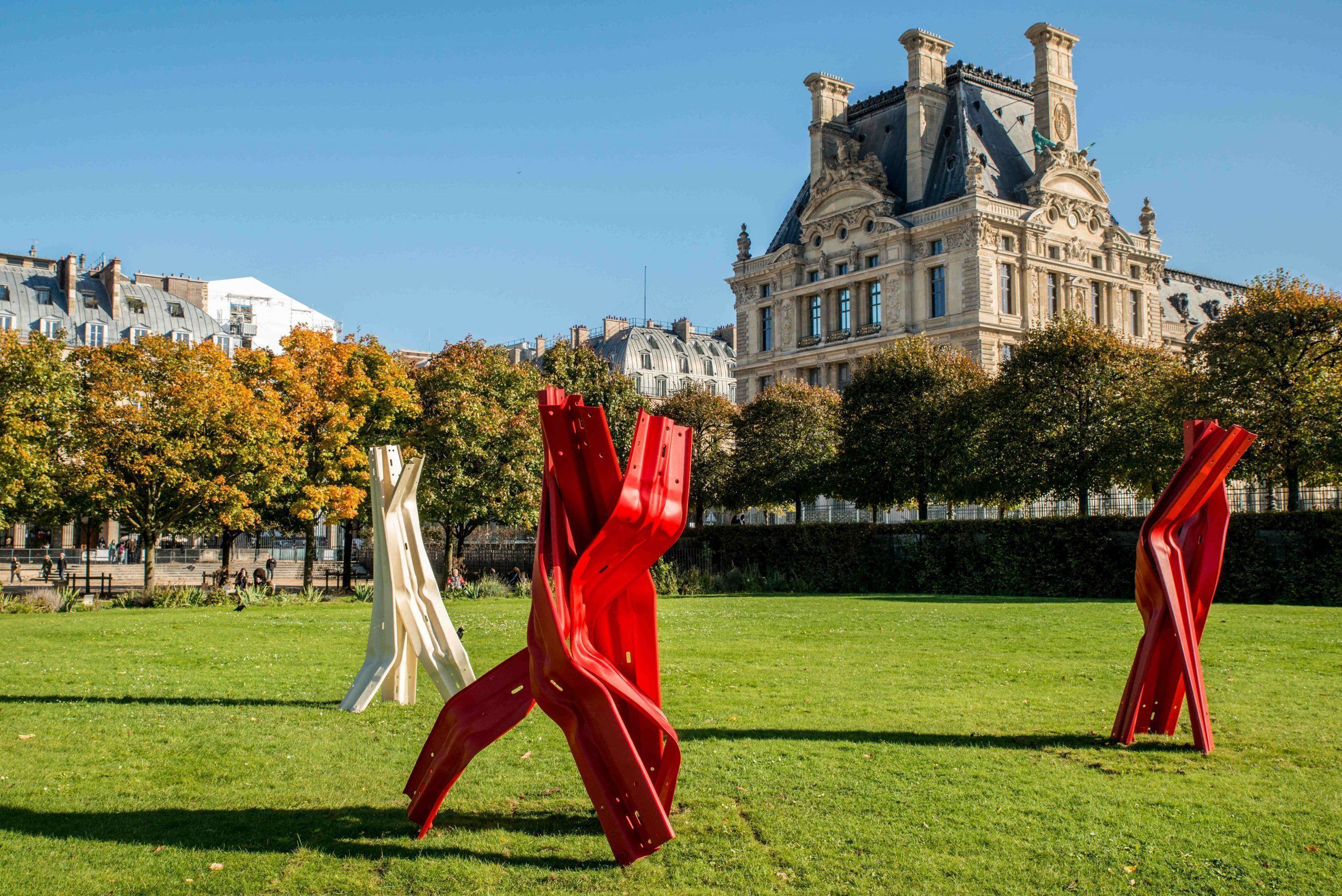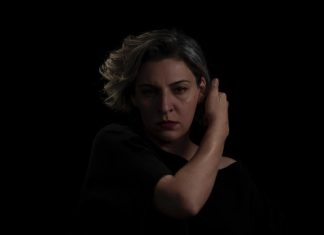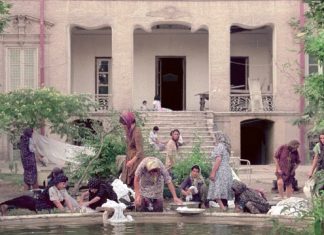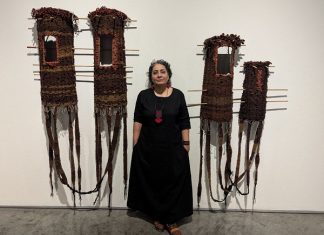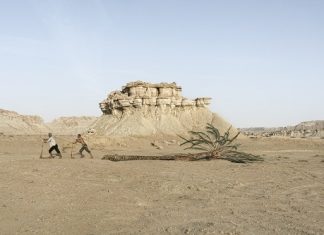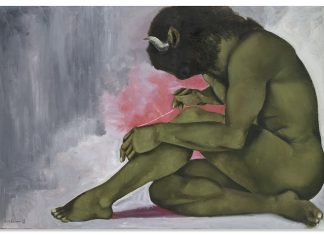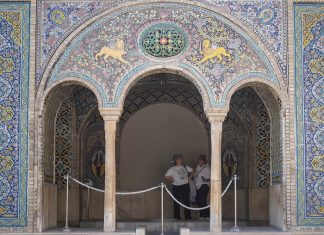By Nazanine Nouri
Iranian art galleries were in the spotlight at the Asia Now Art Fair last week. For its 7th edition, the fair devoted an entire section to Iran, bringing a selection of Iran’s contemporary art galleries to a dedicated platform called “Tehran Now.”
The Tehran-based galleries present in this year’s edition included, +2 Gallery, Aaran, Ab-Anbar, Azad Art, Bavan, Etemad, Mohsen, and Saradipour Art.
The galleries were selected by an artistic committee composed of Jean-Marc Decrop (Asian art specialist and collector), Aria Kasaei (co-founder of Studio Kargah which was tasked with the staging of Tehran Now), Odile Burluraux (a curator at the Musee d’art moderne in Paris), and a number of advisors who contributed to the platform’s projects — Fereydoun Ave, Maneli Keykavoussi, Kamran Diba, Leila Varasteh and Vida Zaim, and Behnood Javaherpour. It was all based on an idea by Tatiana Gecmen Waldeck and Anahita Vessier.
“Iran is fascinating because it is a civilization with 7,000 years of history, a cultural capital that has produced many great artists,” said Jean-Marc Decrop. “Today we find some artists working with those classic propositions, like reinterpreting Persian miniatures, while others engage in practices that are more conceptual. We see growing interest from different parts of the world, namely China and the Persian Gulf, in this new territory.”
Also featured at Asia Now was “Burning Wings,” a 70-minute video projection curated by Odile Burluraux, in which 10 female Iranian artists confronted history, the evocation of exile, transgression, the question of relationships to power or social and religious norms.
It was dedicated to the great Iranian poet and writer Forough Farrokhzad (1934-1967) and the projection was set to the tone of a verse from one of her poems: “Do not seal my lips with the padlock of silence, for I have an untold story in my heart.”
View this post on Instagram
Alexandra Fain, director and founder of Asia Now, said these female artists were fighters, “determined to express their desire to exist, to support silent but active protests.” The projection was made up of three- to 10-minute videos by the following artists: Atousa Bandeh Ghiasabad, Samira Eskandarfar, Parisa Ghaderi, Elika Hedayat, Anahita Hekmat, Shiva Khosravi, Tahmineh Monzavi, Melika Shafahi, Rojin Shafiei, and Sanaz Sohrabi. “These women are repositories of a collective memory,” Odile Burluraux told the New York Times. “A sense of nostalgia for Iran’s landscapes, its tradition and its architecture, and a powerful evocation of places left behind runs through their work.”
The following is a list of participating galleries and the artists they exhibited: +2 Gallery presented “Fragmented Orientalism,” a group show of 30 artists curated by the artistic director Fereydoun Ave including works from his own private collection. Featured artists included: Niyaz Azadikhah, Bita Fayyazi, Reza Aramesh, Nikzad Nodjoumi, Andisheh Avini, Mehrdad Mohebali, Elika Hedayat, Ardeshir Mohassess, Peybak, Nima Zaare Nahandi, Bahman Mohammadi, Sina Choopani, Sam Samiee, Sepand Danesh, Nasser Bakhshi, Ojan Zargarbashi, Sadra Baniasadi, Mojtaba Ghasemi, Sina Ghasemi, Niki Fallahfar, Sepehr Hajiabadi, Mohammadhossein Gholamzadeh, Alborz Kazemi, Peyman Konjkav, Milad Mousavi, Amir Kamand, Amin Montazeri, and Yashar Salahi.
Aaran featured a series of acrylic on printed canvas by Kamran Diba (b. 1937), the founding Director of Tehran Museum of Contemporary Art 1974-1978. Ab-Anbar featured paintings by the multimedia artist Sonia Balassanian and digital prints by Arash Hanaei. For the gallery, Balassanian’s paintings represent “a calligraphy of brushwork resembling breeze through fields or streaks of rain” and convey “an aura of stand-still quiet and a feeling of awe and reverence,” while Hanaei’s digital prints “possess the unheimlich quality of silence.”
Azad Art presented works by Reza Derakhshani and Koorosh Shishegaran – pioneers of the Iranian-centric art movements in recent years that have been fully embraced by the international artistic community.
View this post on Instagram
Bavan featured the expressionist figurative paintings of Elham Etemadi who lives and works in France.
Etemad presented the works of four abstract artists who use geometrical approaches as tools of expression: Habib Farajabadi, Maryam “Mimi” Amini, Morteza Ahmadvand and Peyman Shafieezadeh.
Mohsen presented the works of a generation of artists born after the Iranian revolution and the Iran-Iraq war: Sara Abassian, Sasan Abri, Majid Biglari, Elika Hedayat, Amir-Nasr Kamgooyan, Ali Phi, and Arya Tabandehpour.
Saradipour Art presented a group show by three contemporary Iranian artists: Ali Zakeri, Abbas Nasle Shamloo and Moslem Khezri.
[aesop_image img=”https://kayhanlife.com/wp-content/uploads/2021/10/Moslem-Khezri-We-Keep-Reviewing-37-2020-Watercolor-on-cardboard-24.5×24-scaled.jpg” panorama=”off” credit=”Moslem Khezri – We Keep Reviewing 37, 2020, Watercolor on cardboard, 24.5×24. ” align=”center” lightbox=”off” captionsrc=”custom” captionposition=”left” revealfx=”off” overlay_revealfx=”off”]
Aside from the works of these 50 artists, the work of the late abstract artist Farideh Lashai who passed away in 2013, “Leyla va Majnun” (diptych) was showcased through her foundation.
Artists from the Iranian diaspora were also featured in a number of mainly Paris-based international galleries. They included: Farhad Moshiri (Galerie Perrotin); Hoda Kashiha (Nathalie Obadia); Golnaz Payani (Praz-Delavallade); Alireza Shojaian (La La Land); Nastaran Shahbazi (LJ); Sepand Danesh, Parastoo Ahovan and Masoud Keshmiri (Noushine Pahlevan); Amirhossein Akhavan (Galleria A41 in Rome); Tahmineh Monzavi (Galerie Felix Frachon in Brussels); and Mohammad Banissi (HdM Gallery in London and Beijing).

